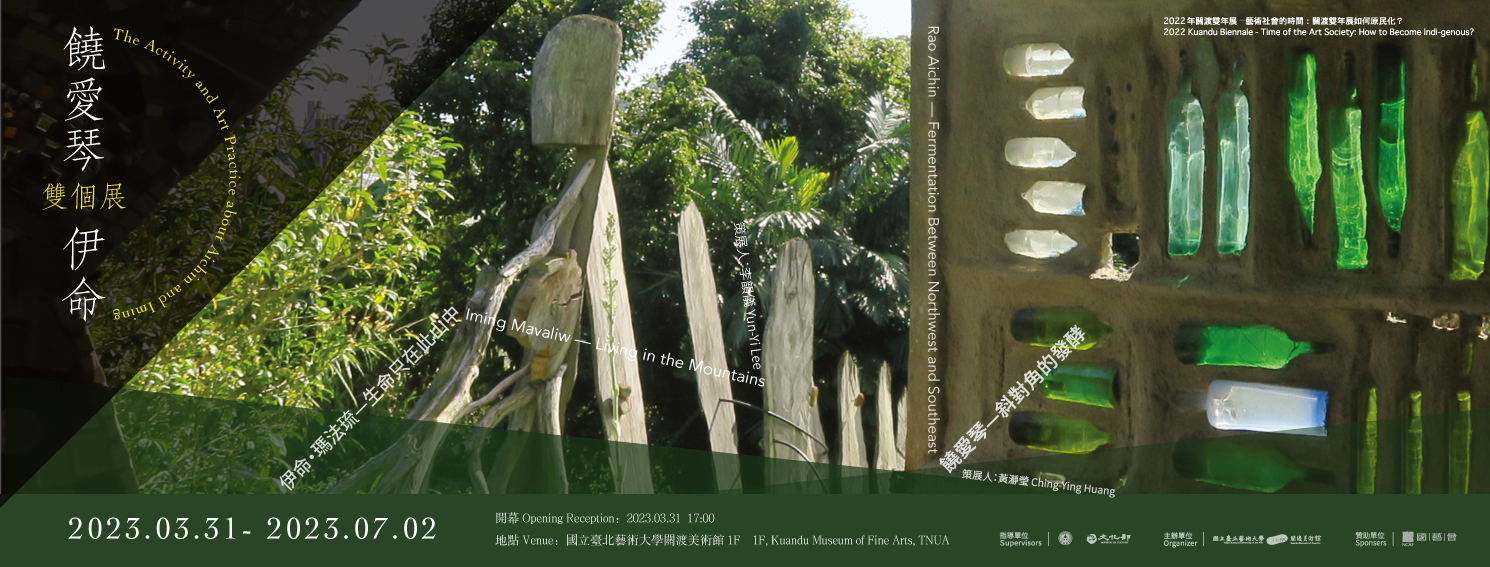Fermentation between Northwest and Southeast shows a journey Rao Aichin had on which she created artworks while living her life from 1999 to 2023. The journey is woven out of her oil paintings, artistic act, and material experiments all together.
Rao created her very own ways of oil painting. One is to, right at the beginning of creation, step into the ring of “observing color intuitively” and to slip into color’s eagerness for shapes. Another is that, during her long stay in the wild, she observed the surroundings and changes. Especially, she repeatedly depicted Shitiping in Makotaay. And the other is to mix the above two ways so that she could recreate, recall, catch, and feel once again those unique moments in life. In the process of oil painting, both the active deployment of external environment and the self-forced display of internal time and space created “wait time” and formed a directional line pointing towards “pre-artistic-creation”. After repeatedly laying down layers of paint and keeping all marks, Rao let color itself remain its temporary images while flowing freely without framing by any shape. Finally, to arrange the process and leave a nomadic mark on a canvas, Rao selected each and every mark and interpreted them.
After the year 2005, the long stay in the wild motivated her not only to create “putting up a tent” pattern of pre-artistic-creation, but also to establish a relationship with environment. Thereafter, she gradually turned to create on surfaces other than canvas. In 2022, she stayed on Jinzun beach and traced Qili River time after time. She also conducted field studies on clay layers near the river and set up temporary houses on the spot where she could carry long-term experiments on materials. Those temporary houses were adjusted in different environments accordingly. For instance, she created the Connection series with thin materials used in crochet, creating a form of space sensing or an installation which is able to define a certain space. These houses became narrative spaces for Rao’s own migration routes. Born in northwestern Taiwan and as a female Hakka artist, Rao moved to the southeastern part of the island through action and labor. Besides, she accumulated internal patterns of moving and stories of migration.
The leading installations of pre-artistic-creation are a waiting axis generated through artistic creation led by the “putting up a tent” pattern. A switching-on axis was generated through a nomad life forced by each artistic creation. An occurring axis was generated through her long stay in the wild during the process of creation. Fermentation between Northwest and Southeast weaved the three axes: waiting, switching-on, and occurring. This exhibition is an exclusive journey for Rao on which she created artworks while living her everyday life.
Born in Longtan, Taoyuan, Rao Aichin swam in ponds and streams and climbed high mountains as a child, gaining the experience of physical effort and resonance in the natural wilderness. In 1998, Rao settled in the Katratripulr village in Zhiben, Taitung, and began to work on oil paintings, installations, and public art. In 2002 and 2022m she joined the collective living in the Open Circle Tribe at the Jinzun beach. After participating in the “Hweilan International Artists Workshop” in 2005, Rao has gradually developed the production mode of “tenting” and in situ practice. She focuses on the momentary perceptions or memories of her personal life. Through physical interaction in the environment or on canvas, she transforms potential life messages into an extending and penetrating space of perception. In each of her practice, Rao has developed a highly personal aesthetic vocabulary. In 2011, to resist the “Miramar Resort Build-Operate-Transfer development project,” Rao was stationed at Shanyuan Beach with her friends by tent-building and contributed to the consequent environmental protest of the east coast artist community. She is an art practitioner who is always on the move.
